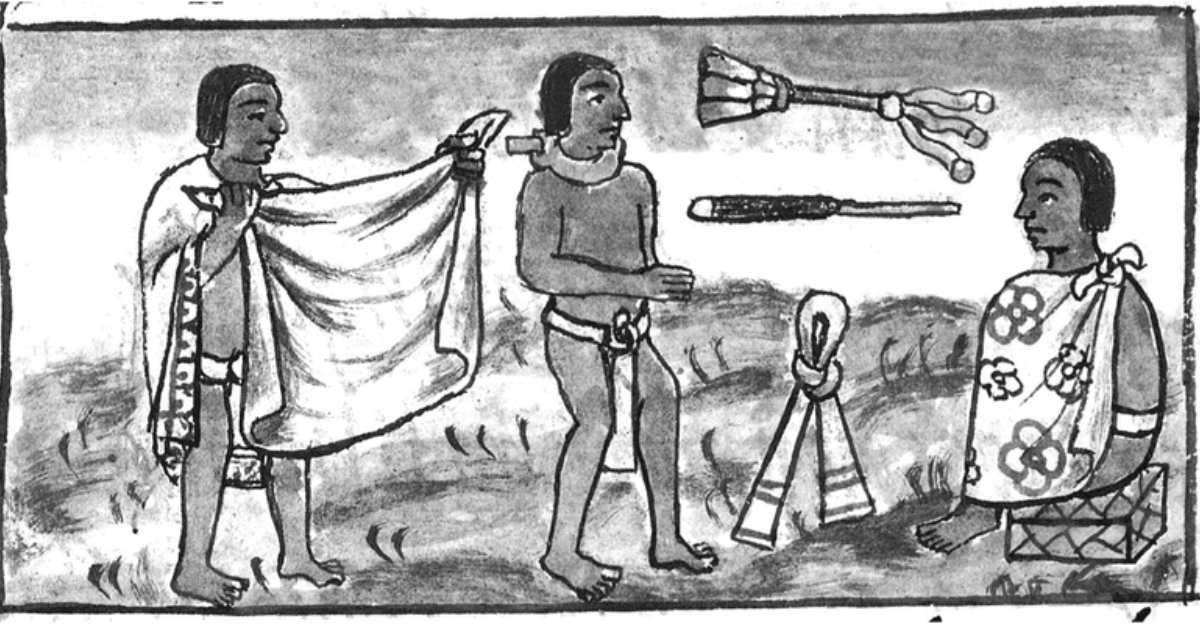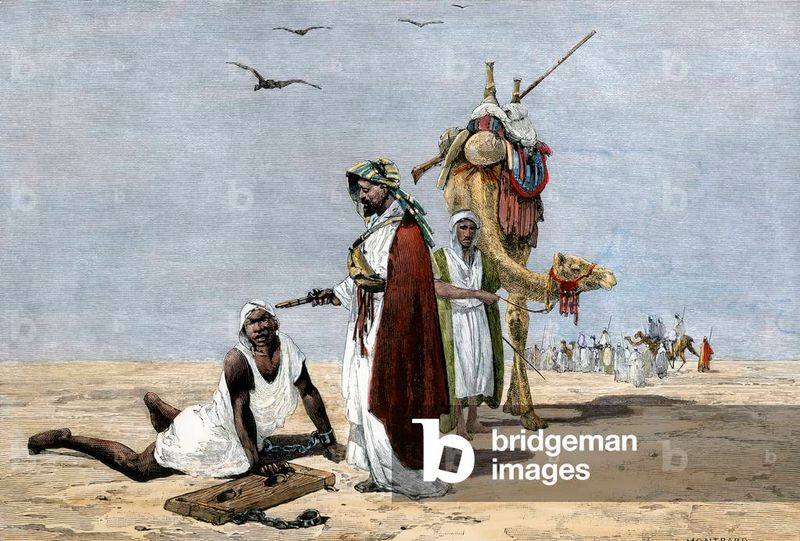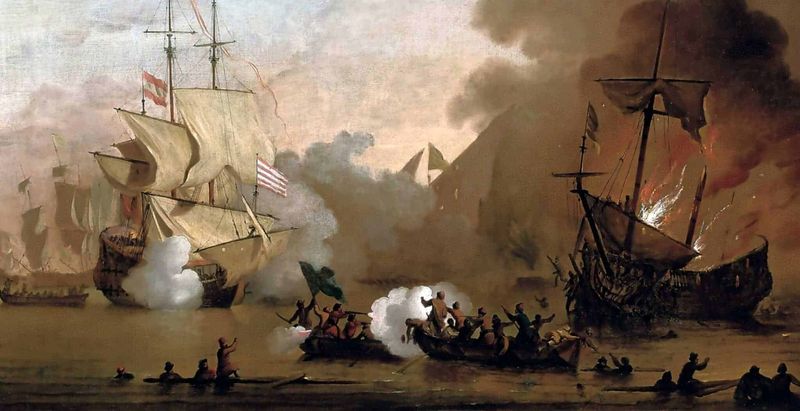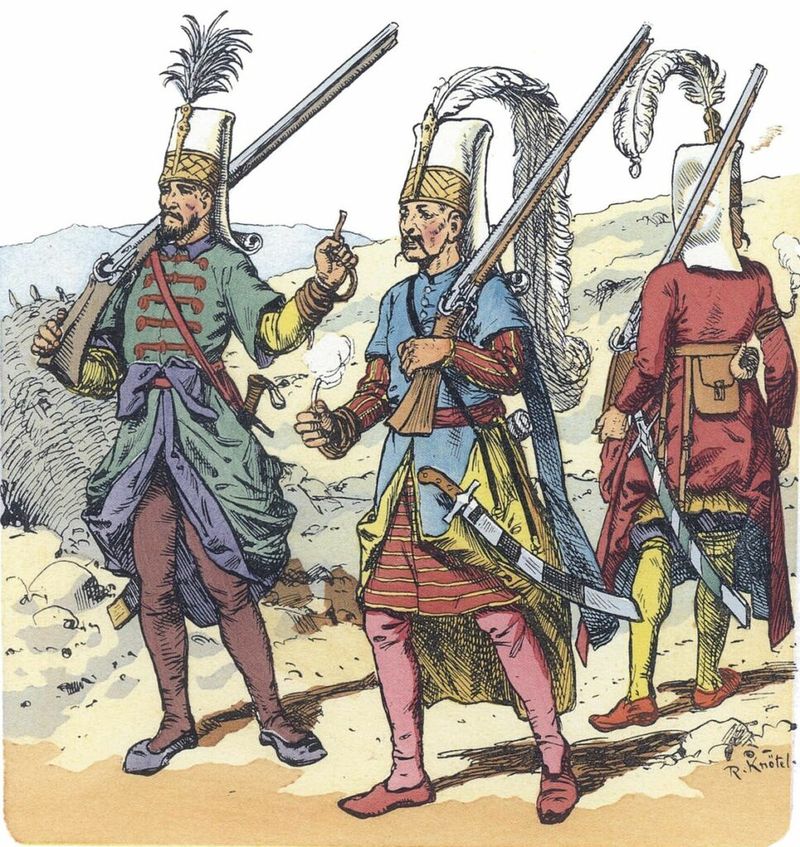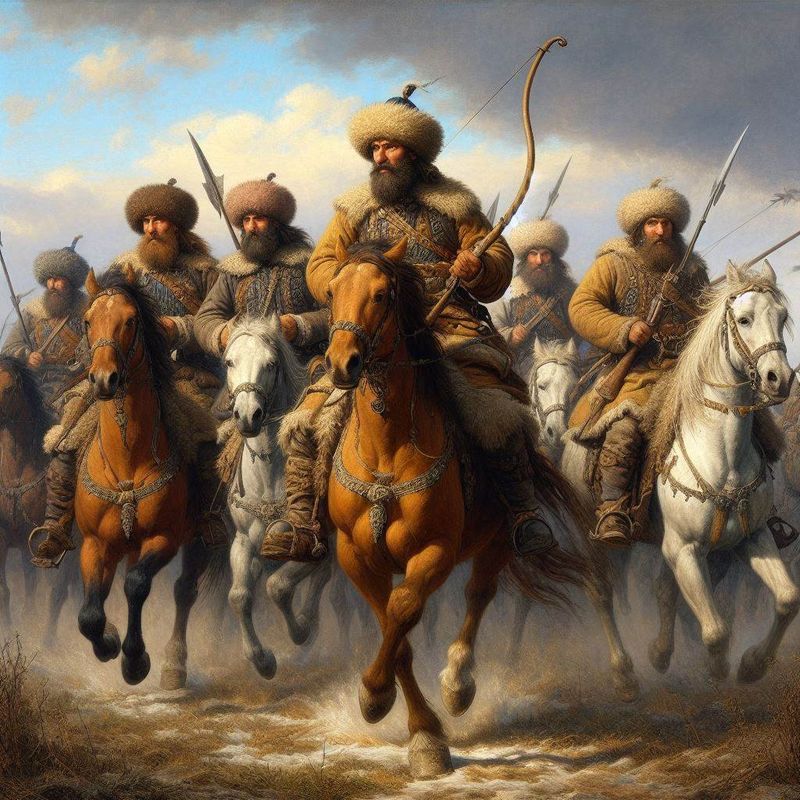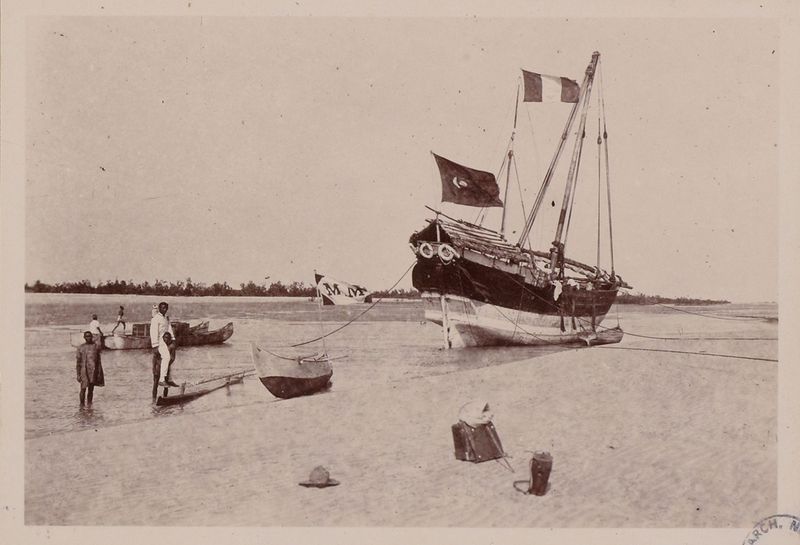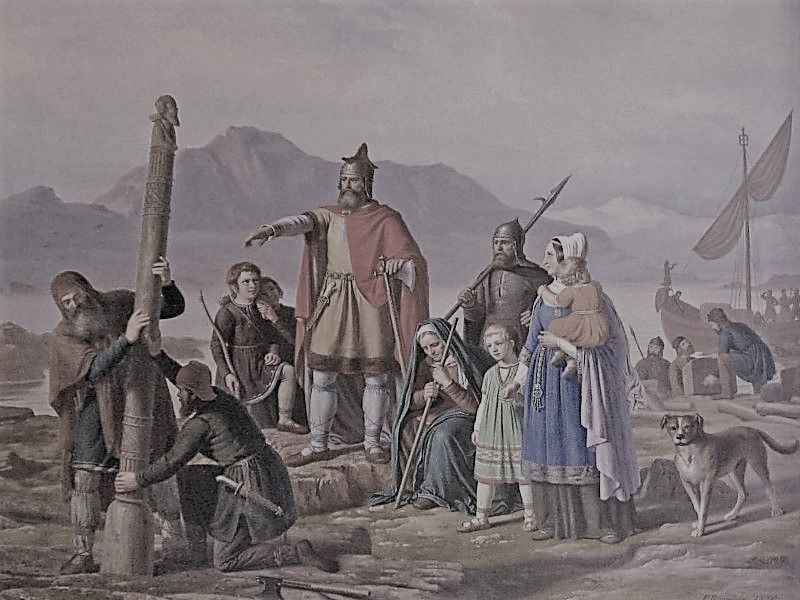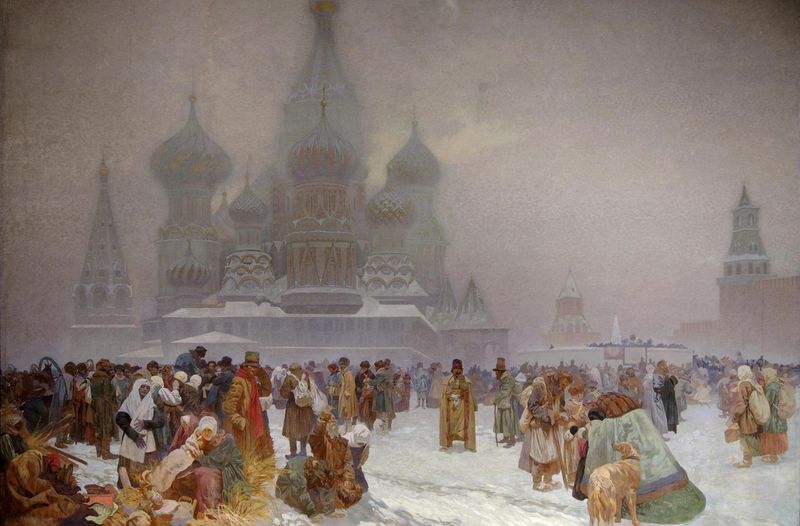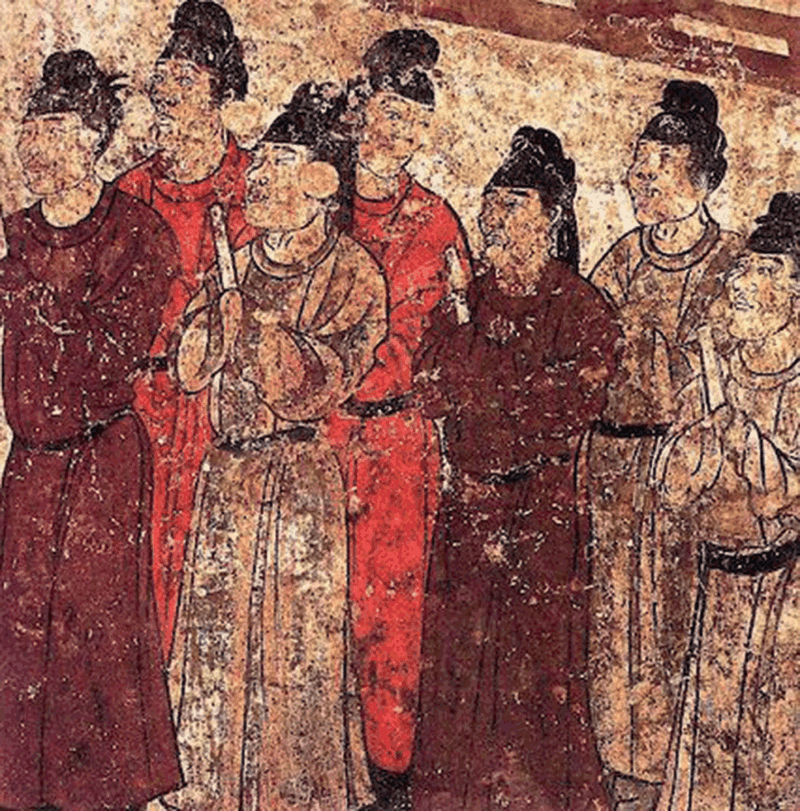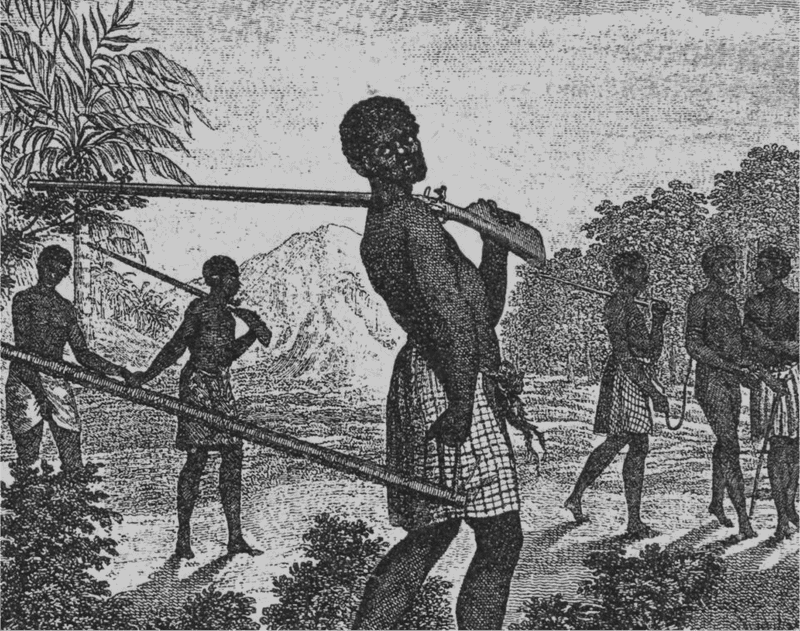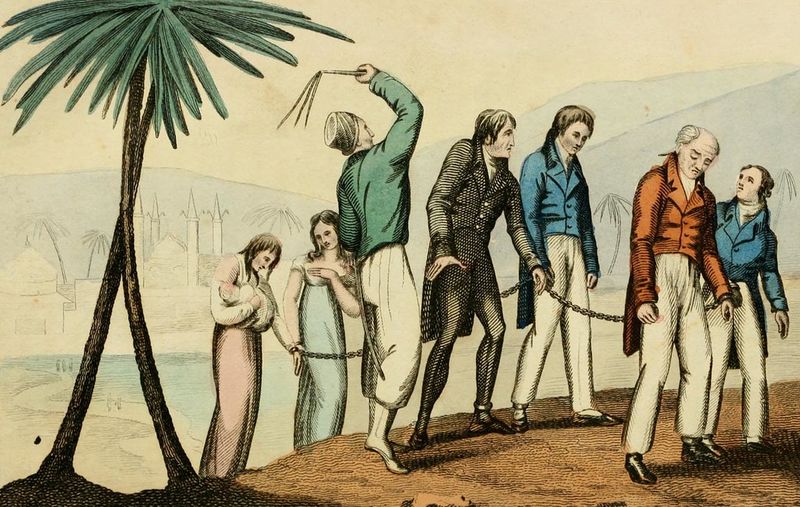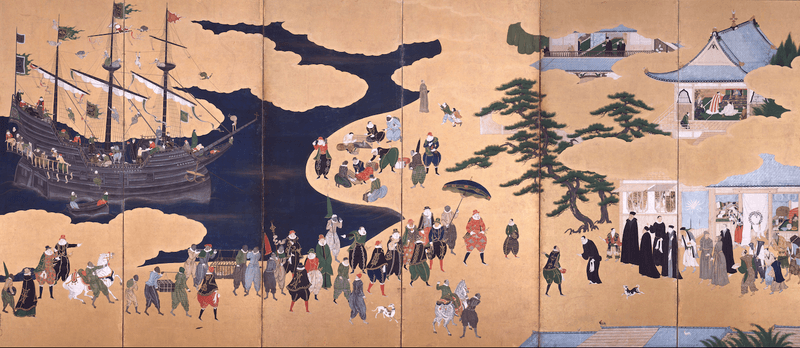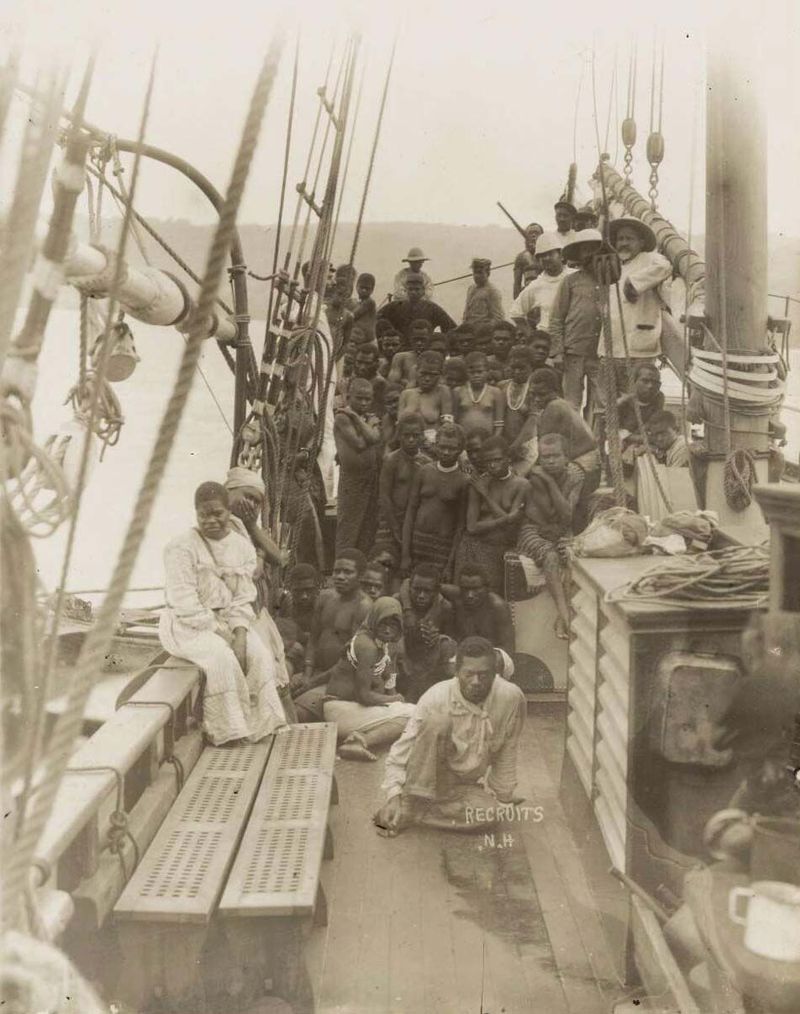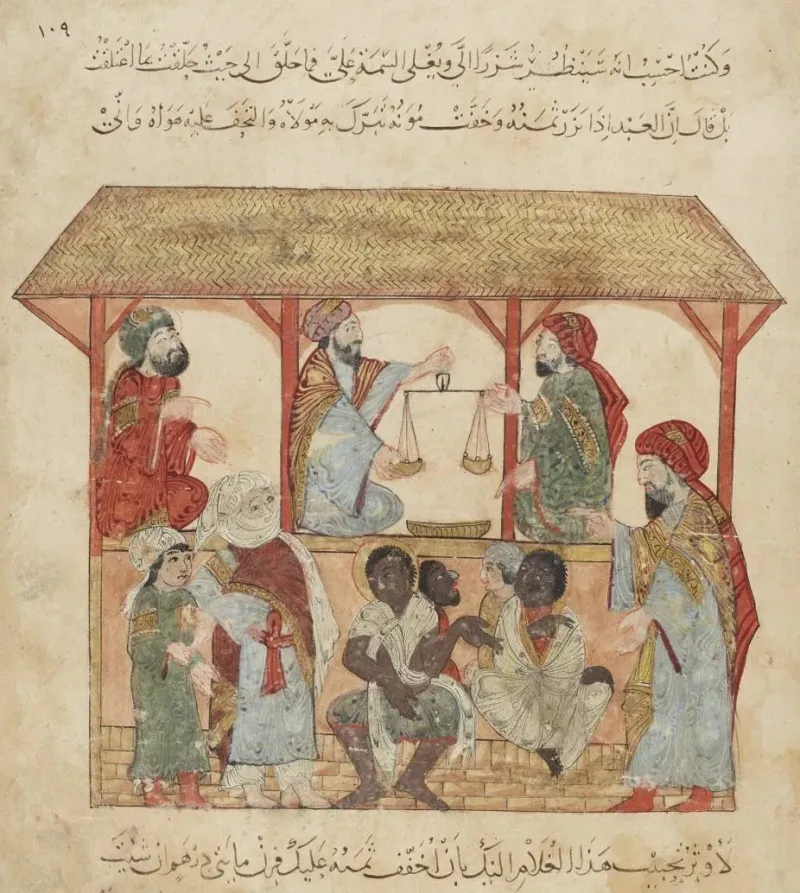Most people know about the Atlantic slave trade that brought millions of Africans to the Americas. However, slavery existed in many other forms across the world for thousands of years.
From Viking raids in Europe to forced labor in ancient China, countless other slave trades shaped human history. These forgotten stories reveal how widespread and varied slavery was across different cultures and time periods.
1. The Arab Slave Trade Across Sahara and Indian Ocean
Stretching over a millennium, this massive trade network moved millions of people from sub-Saharan Africa to distant lands. Arab traders created routes that crossed the brutal Sahara Desert and sailed across the Indian Ocean to reach markets in North Africa, the Middle East, and India.
The journey was incredibly harsh, with many captives dying along the way. Male slaves were often castrated to serve as eunuchs in wealthy households, while women were sold into harems.
This trade lasted much longer than the Atlantic slave trade, continuing well into the 20th century in some regions.
2. Barbary Pirates Raiding European Coasts
Between the 1500s and 1800s, North African pirates terrorized European coastal towns in daring raids. These Barbary corsairs sailed from ports in Algeria, Tunisia, and Morocco to capture Christian Europeans for slave markets.
Entire villages along the Mediterranean coast were sometimes completely emptied of people. The pirates even ventured as far as Ireland and Iceland to kidnap victims.
Captives were marched to slave markets in Algiers, Tunis, and Tripoli, where they faced lives of hard labor or domestic servitude until they could be ransomed back to their families.
3. Ottoman Empire’s Systematic Use of Slavery
The powerful Ottoman Empire built its entire society around different forms of slavery. From household servants to elite palace guards, enslaved people filled crucial roles throughout the empire.
The most famous were the Janissaries, Christian boys taken from their families and converted to Islam to serve as the sultan’s personal army. These child soldiers received excellent training and education, sometimes rising to high positions in government.
The devshirme system, or “blood tax,” required Christian families to give up their sons every few years to serve the Ottoman state for life.
4. Crimean Tatars Enslaving Eastern Europeans
Working closely with the Ottoman Empire, Crimean Tatars conducted massive slave raids into Russia, Ukraine, and Poland for centuries. These lightning-fast cavalry attacks captured millions of Slavic people.
Entire families were torn apart as captives were forced to march hundreds of miles to slave markets in Crimea. From there, they were shipped to Istanbul and sold throughout the Ottoman Empire.
The constant threat of these raids shaped the development of Eastern European societies, forcing people to live in fortified towns and maintain standing armies for protection against the next attack.
5. Indian Ocean Networks Supplying Asian Markets
Arab and Indian merchants created extensive trade networks that brought enslaved Africans and Southeast Asians to China, Indonesia, and Malaysia. This lesser-known route operated for centuries alongside the better-known Atlantic trade.
Captives served many purposes in their new homes: laborers in rice fields, concubines in wealthy households, and eunuchs in imperial palaces. Some African slaves even served in the armies of Southeast Asian kingdoms.
The monsoon winds that powered trade ships also determined when slave ships could sail, creating seasonal patterns of human trafficking across the vast Indian Ocean.
6. Saqaliba: Slavic Slaves in Islamic Courts
Slavic people from Eastern Europe were highly prized in Islamic societies, where they were known as “Saqaliba.” These fair-skinned captives were considered exotic and valuable throughout the Muslim world.
Many Slavic slaves were trained for important positions in royal courts, serving as bodyguards, administrators, and military commanders. Some even became rulers themselves, founding dynasties in places like Egypt and India.
The word “slave” itself comes from “Slav,” showing how common it was for Slavic people to be enslaved. Their light skin and different appearance made them particularly sought after in Middle Eastern markets.
7. Aztec and Maya Slavery Before Columbus
Long before Europeans arrived, powerful Mesoamerican civilizations practiced slavery on a large scale. The Aztecs and Maya captured enemies in war and used them for various purposes in their societies.
Many captives faced the terrifying fate of ritual sacrifice to appease the gods, while others worked as laborers building temples and pyramids. Some were even trained as warriors, forced to fight in gladiator-style combat.
Slavery was so important to these civilizations that slave markets operated in major cities like Tenochtitlan, where people could be bought and sold like any other commodity.
8. Viking Raiders Trafficking Humans Across Europe
Vikings are famous for their raids, but they also ran a profitable human trafficking business across medieval Europe. These fierce warriors captured people from Ireland, England, and Slavic lands to sell in distant markets.
Their longships could quickly strike coastal villages and river towns, loading captives alongside gold and silver. Viking traders then sailed to markets stretching from Iceland to Constantinople, where human cargo fetched high prices.
The Vikings were so successful at this trade that some historians believe human trafficking was more profitable for them than traditional raiding and pillaging.
9. Russian Serfdom’s Hereditary Bondage System
Though not officially called slavery, Russian serfdom created a system of hereditary bondage that trapped millions of peasants. Serfs were tied to the land and could be bought, sold, and punished by their noble owners.
Families remained in bondage for generations, with children automatically becoming serfs if their parents were. Landowners had almost complete control over their serfs’ lives, including the right to prevent marriages and separate families.
This system lasted until 1861, when Tsar Alexander II finally abolished it – ironically, just as the American Civil War was beginning to end slavery in the United States.
10. Ancient Chinese Slavery Through the Dynasties
For thousands of years, Chinese dynasties used slavery as a foundation of their social and economic systems. War captives, criminals, and people unable to pay debts were forced into various forms of bondage.
Some slaves worked in agriculture and mining, while others served in wealthy households or government offices. The Han Dynasty even created a bureaucratic class of educated slaves who helped run the empire.
Chinese slavery was often hereditary, meaning children of slaves automatically became slaves themselves. This system continued in various forms until the modern era, shaping Chinese society for millennia.
11. African Kingdoms Enslaving Fellow Africans
Powerful African empires like Dahomey, Ashanti, and Benin built their wealth by capturing and selling people from neighboring tribes. These kingdoms developed sophisticated military systems designed specifically for slave raiding.
The famous Dahomey Amazons were female warriors who specialized in capturing people for the slave trade. These kingdoms sold captives not only to European traders but also to Arab and Asian buyers.
This internal African slave trade was often more brutal than people realize, with some kingdoms existing almost entirely to capture and sell human beings to the highest bidder.
12. Thai and Burmese Kingdoms Raiding Each Other
Southeast Asian kingdoms regularly attacked each other’s cities with the specific goal of capturing entire populations. These raids were so common that they shaped the region’s history for centuries.
Captives were used to populate underdeveloped areas, serve in armies, or work as domestic servants in royal households. Sometimes entire cities were emptied, with survivors marched hundreds of miles to their new homes.
The practice was so widespread that it created a cycle of revenge raids, with kingdoms constantly attacking each other to recapture their own people or to gain new captives.
13. Islamic Spain’s Christian Slave Labor
In Al-Andalus, as Islamic Spain was known, thousands of Christian captives worked as slaves in agriculture, domestic service, and construction. These slaves helped build the magnificent palaces and mosques that still stand today.
Many were captured during raids into Christian territories, while others were purchased from slave markets in North Africa. Christian slaves were particularly valued for their skills in crafts and agriculture.
Some slaves could earn their freedom through conversion to Islam or exceptional service, but most remained in bondage throughout their lives, helping to build one of medieval Europe’s most advanced civilizations.
14. Japanese Human Trafficking Before Tokugawa
Before the Tokugawa shogunate banned it, Japan engaged in human trafficking both within the country and internationally. Japanese people were sometimes sold to Portuguese traders in the 16th century.
Internal slavery existed as well, with prisoners of war, criminals, and debtors forced into bondage. Some Japanese slaves even ended up in places like India and the Philippines through Portuguese trading networks.
The practice became so concerning that Japanese rulers eventually banned it entirely, cutting off most foreign trade to prevent their people from being sold abroad. This isolation policy lasted for over 200 years.
15. Pacific Islander Blackbirding Operations
During the 19th century, Pacific Islanders were deceived or kidnapped in a practice called “blackbirding.” Recruiters promised good jobs and wages but instead transported people to plantations in Australia, Fiji, and Peru.
The conditions were barely different from slavery, with workers trapped on plantations for years with little pay and no way to return home. Many died from disease, overwork, or violence.
Entire island communities were devastated by these raids, with some islands losing most of their young men. The practice continued until international pressure finally forced governments to ban it.
16. The Zanj Rebellion in Medieval Iraq
One of history’s largest slave revolts occurred in 9th-century Iraq when African slaves called the Zanj rose up against their Arab masters. These slaves worked in terrible conditions in the salt marshes of southern Iraq.
The rebellion lasted for nearly 15 years and came close to overthrowing the powerful Abbasid Caliphate. The Zanj established their own state and defeated several imperial armies sent to crush them.
Their success inspired other slave revolts throughout the Islamic world and forced rulers to reconsider how they treated enslaved people. The rebellion remains one of the most successful slave uprisings in world history.
17. Tibetan Serfdom in the Himalayas
Until the 1950s, most Tibetans lived as serfs or bonded peasants under religious monasteries and aristocratic landlords. This system was similar to medieval European feudalism but lasted much longer.
Serfs were tied to the land and could not leave without permission from their lords. They had to work for free several days each week and give most of their crops to their masters.
The system was finally abolished when China took control of Tibet, though this created new problems for Tibetan society. For centuries, this form of bondage had kept most Tibetans in poverty while supporting wealthy monasteries and nobles.
